Things to do in Kaliningrad. Attractions in Kaliningrad. Kaliningrad City Guide. Places and events in Kaliningrad.

The Museum of the World Ocean is unique in character and diversity of its objects and exhibits, has enormous potential of attractiveness to tourists who get an opportunity to visit objects of research and military purposes, access to which is usually strictly limited. The Museum of the World Ocean possesses the country's only Quay of Historical Fleet where several vessels are moored: the world's largest research ship acting as a museum "Vityaz", the country's only submarine afloat acting as a museum "B-413", the only space communication ship in the world with an exposition "Cosmonaut Viktor Patsaev", the country's only fishing boat acting as a museum "SRT-129". The Quay of Historical Fleet has also a branch in St. Petersburg, which is the world's oldest icebreaker "Krasin".
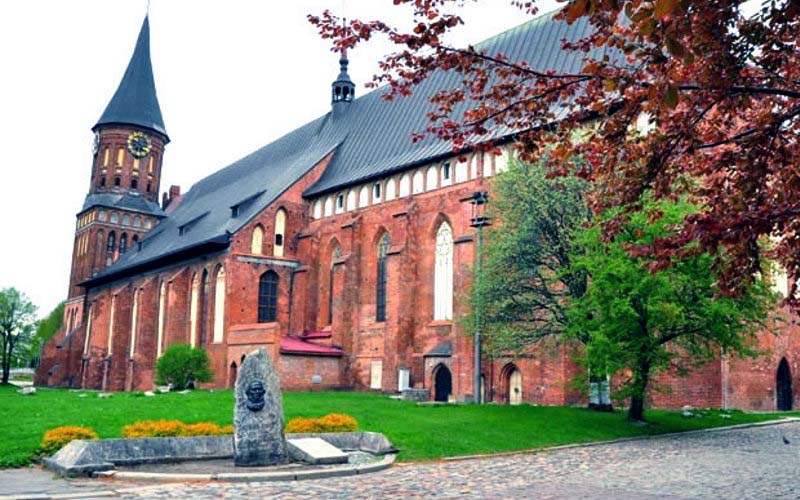
Spread over three floors in the upper part of Kaliningrad Cathedral, accessible only by a treacherous spiral staircase, the Kant Museum is generally dedicated to the life and times of 18th-century German philosopher Immanuel Kant. The first of these floors covers the history of Kant Island, the second is home to the famous Wallenrodt Library and the final one focuses on the man himself with various bust sculptures and, rather gruesomely, his death mask. The jewel in the museum's crown, however, is undoubtedly the gleaming mahogany Wallenrodt Library, which was founded by Prussian Chancellor Martin von Wallenrodt in 1623 based on his own private collection. In spite of its secular nature, it was relocated to the cathedral by his son in 1650 and was then by various means built up to a collection of over 10,000 books and manuscripts.
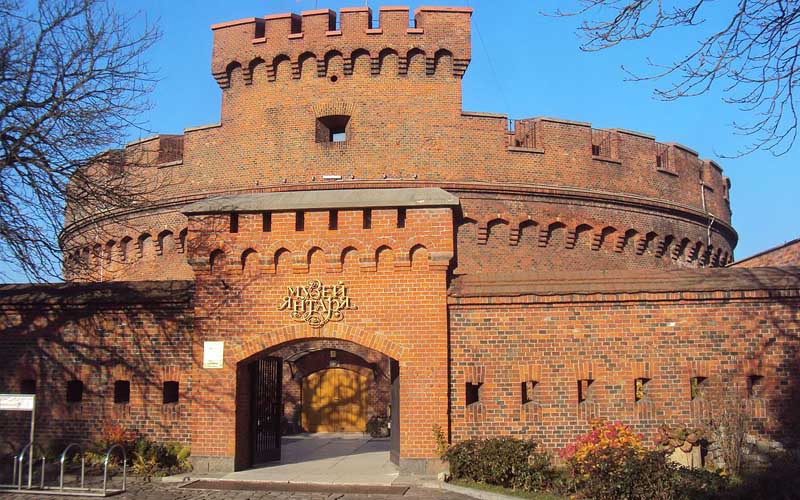
This museum features over 6000 amber exhibits, including marvellous artworks, a whopping 4.28kg nugget and ancient specimens with prehistoric insects and plants fossilised in resin. This might have something to do with the fact that here, we are in the home of the vast majority of the world’s amber deposits and that for centuries Kaliningrad and Konigsberg before it was home to some of the world’s leading amber craftsmen. It might also have something to do with the museum being located in the remodelled interiors of the Dohna Tower, so you can experience two things at once. Also on the list of pluses is that the museum has a generous smattering of English-language descriptions which help to explain not just the formation of amber but also some of its history in the traditions of different groups and some of the more unusual pieces that have been discovered.
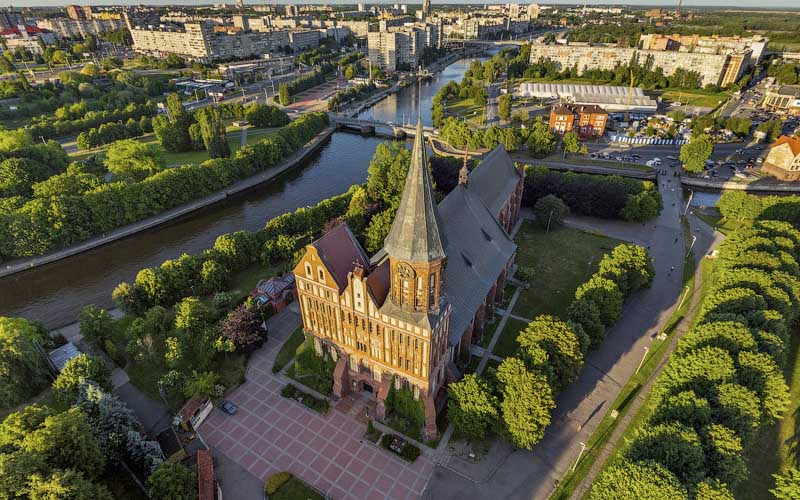
Königsberg Cathedral is a Brick Gothic-style monument in Kaliningrad, Russia, located on Kneiphof island in the Pregel (Pregolya) river. It is the most significant preserved building of the former City of Königsberg, which was largely destroyed in World War II. Dedicated to Virgin Mary and St Adalbert, it was built as the see of the Prince-Bishops of Samland in the 14th century. Upon the establishment of the secular Duchy of Prussia, it became the Lutheran Albertina University church in 1544. The cathedral burnt down after two RAF night raids in late August 1944; reconstruction started after the Perestroika movement in 1992.
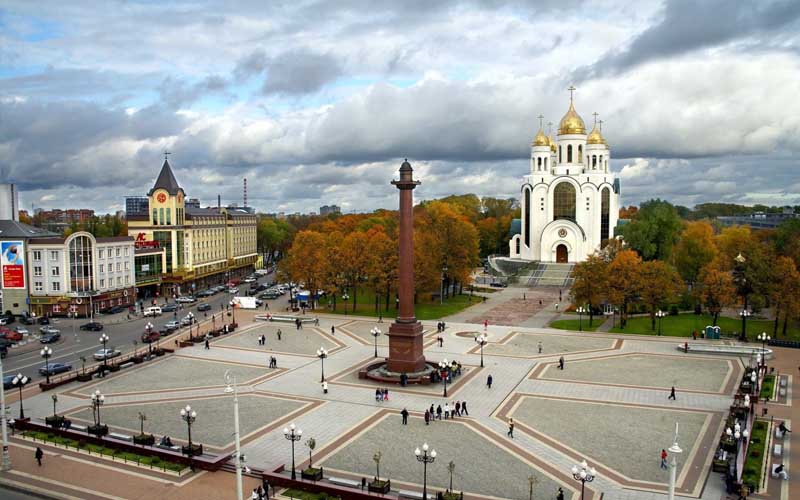
Victory Square is a central square in Kaliningrad. Prior to 1945, the square was part of Königsberg, Germany. Steindamm Gate, part of the city's northwestern Baroque city walls, was dismantled in 1912 to allow development of the area between Steindamm and the Hufen suburbs. The road leading from central Königsberg to Mittelhufen was known first as Kaiser-Wilhelm-Damm in honor of Wilhelm II, German Emperor. Königsberg was transferred to the Soviet Union in 1945 and then renamed Kaliningrad.
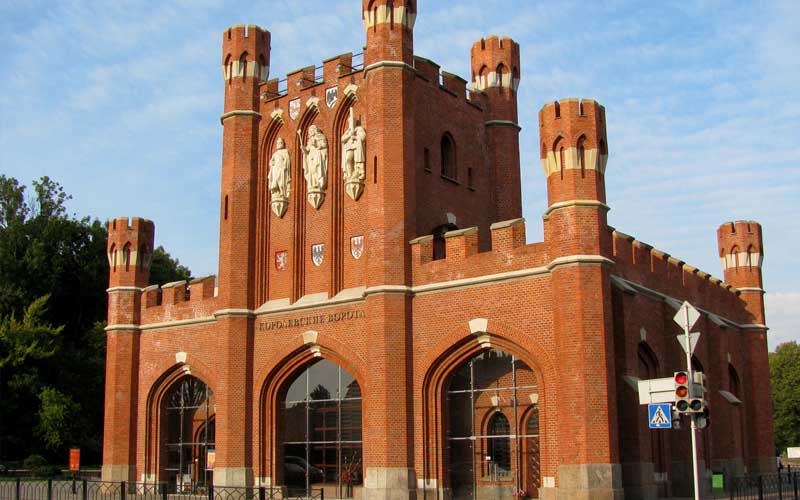
The King's Gate was generally considered one of the most beautiful gates in the city. The current King's Gate was built on the site of the older Kalthof Gate demolished in 1717. When Königsberg was part of the Russian Empire during the Seven Years War, the gate was rebuilt by Russian engineers. It was originally called the Gumbinnen Gate as the road there led to Gumbinnen (now Gusev). In 1811, it was renamed the King's Gate after the name of the street where it was located (Königstrasse), which, in its turn, was called so due to the fact that Prussian kings took it on their way out of the Königsberg castle to the suburb where army parades took place.